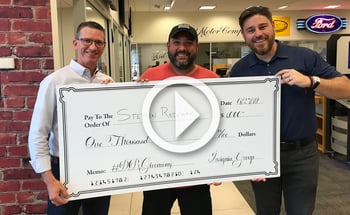American dealerships report a rise in new-car sales, and also a drop in profit margin. It’s a perplexing contrast for sure. The direction for both numbers remains consistent for all five publicly traded dealership groups. It’s worth an examination and a handful of theories. Interpretation of the numbers will influence how the groups proceed.
COMPETITION | When supply surpasses demand, it’s a buyer’s market. Dealerships hedge their bets on a weaker margin to secure the car sale. Service revenue and other gains become focal points.
CONSUMER TASTES | How many customers will sign on the line for a new car? Incentives from one dealership force the hand on others. Consumer taste affects which dealerships must concede less.
LOW GAS PRICES | Consumers aren’t as compelled to buy fuel-efficient models when gas prices drop. This can boost trucks and SUV sales and curtail non-hybrid cars that get higher fuel efficiency.
Incentives to dealerships also can play a role. Sales departments might budge on price to reach sales goals tied to incentive bonuses. A sale at a lesser margin might trump no sale at all, Asbury president Scott Smith said.
“It’s kind of the idea half a loaf is better than no loaf,” Smith said told Automotive News. “You’re selling a car at a lower rate, but maybe your F&I and service go up. So instead of selling one car at a $5,000 profit, you’re selling two cars at a $3,000 profit.”
Margin concession as a strategy
Earnings tell just a portion of the story.
A rise in earnings becomes pronounced with a corresponding drop in profit margin. A company can sell its product at a steady volume, while it controls operating costs. Movement by either metric toward each other can lead to an audit of the pricing strategy.
Lithia Motors CEO Bryan DeBoer told Automotive News it’s worth a loss of margin if sales climb.
“We still believe if you can continue to drive top-line in vehicles, it’s worth the sacrifice in margin because volume drives service revenue and back-end gains,” DeBoer said.
The first step: That first service appointment
At the point of sale, you have an automatic action plan to foster loyalty: Service.
A study conducted by the late Art Spinella, President of CNW Research concluded that highlights a correlation between loyalty and regular service. It showed that 86% of customers on a regular service plan with the dealership where they bought their new car returned it for future purposes.
Occasional service customers returned 46% of the time to that dealership for a new car.
Numbers tumble with less frequent service at the selling dealership. Just 18% of customers who seldom serviced their cars at the dealership that sold them bought another car from them. If a customer never had their car serviced with you? They’ll come back only 8% of the time for a new vehicle.
How does your dealership fare? Do you set up a service plan with new customers? It can be part of crucial steps, including conversion rates, customer retention, and CSI scores that lead to happy customers who want to buy their next vehicles from you.
Sources:
http://www.autonews.com/article/20150727/RETAIL07/307279971/as-dealership-sales-climb-margins-slide
http://www.shmoop.com/supply-demand/faq.html
http://247wallst.com/autos/2015/02/27/how-gas-prices-affect-car-buyers/




